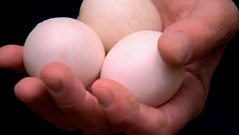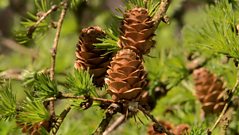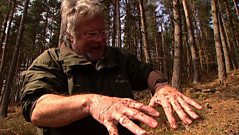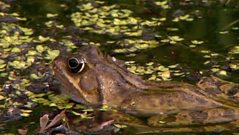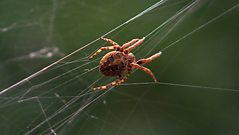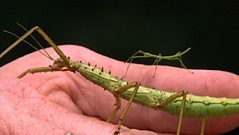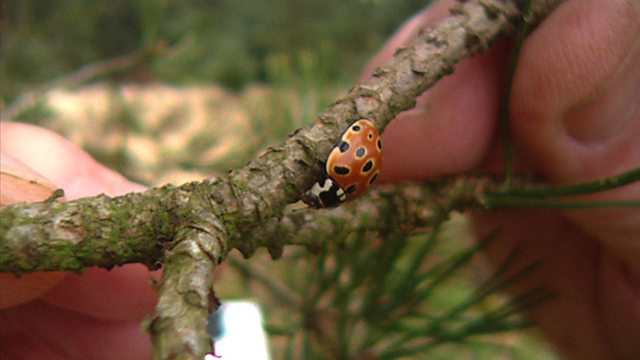
Our lady's birds
Meet the 46 species of British ladybird.
Mike Majerus takes Bill Oddie looking for ladybirds. We鈥檝e got some British ladybirds that are adapted specifically to Scots pine. All we should have to do is start looking on the lower branches both sides for ladybirds. They're not necessarily red with black spots. This one is black, with a tiny amount of red - a pine ladybird. The name ladybird derives from 'Our Lady鈥檚 Birds' - they鈥檙e named after the Virgin Mary. In old depictions of the Virgin Mary she was always in red. Blue is a contemporary thing. The seven black spots are for her seven joys and seven sorrows. So, they are Our Lady鈥檚 Birds. Pine ladybird is really quite a common species. Its Latin name is Exochomus quadripustulatus, but in the 1980s Mike got the joy of giving English names to all the British ladybirds. This is the eyed ladybird, our largest British species. And it really is well adapted to Scots pine and it eats the big brown aphids you get on them, which are a good meal. For a big ladybird you need a big aphid. This is the orange ladybird, which doesn鈥檛 eat aphids - it鈥檚 a vegetarian. In the gorse there are some 14-spot ladybirds. There are 46 British ladybirds in the family, but only 27 that you would actually recognise as ladybirds. Mike recites the 27: 2 spot, 5 spot, 10 spot, 14 spot, cream spot, cream streaked, kidney spot, 11 spot, 22 spot, 24 spot, 16 spot, 18 spot, water ladybird, which can actually swim, eyed ladybird, striped ladybird, 7 spot, scarce 7 spot, larch ladybird, Bryony ladybird, Adonis鈥檚 ladybird, 13 spot and finally the harlequin ladybird.
Duration:
This clip is from
Featured in...
![]()
91热爆 Nature
Be captivated, informed and inspired by the world's wildlife.
More clips from Kielder Forest
-
![]()
Egg chatter
Duration: 02:25
-
![]()
Beak breakers
Duration: 03:40
-
![]()
Bite, spray and sing
Duration: 04:24
-
![]()
Forest fieldcraft
Duration: 01:47
More clips from Bill Oddie's How to Watch Wildlife
-
![]()
Egg chatter—Series 2, Kielder Forest
Duration: 02:25
-
![]()
Garden oases—Series 2, 91热爆s and Gardens
Duration: 01:59
-
![]()
September spiders—Series 2, A Dorset River
Duration: 02:06
-
![]()
Prickly stick insect—Series 2, 91热爆s and Gardens
Duration: 02:53


